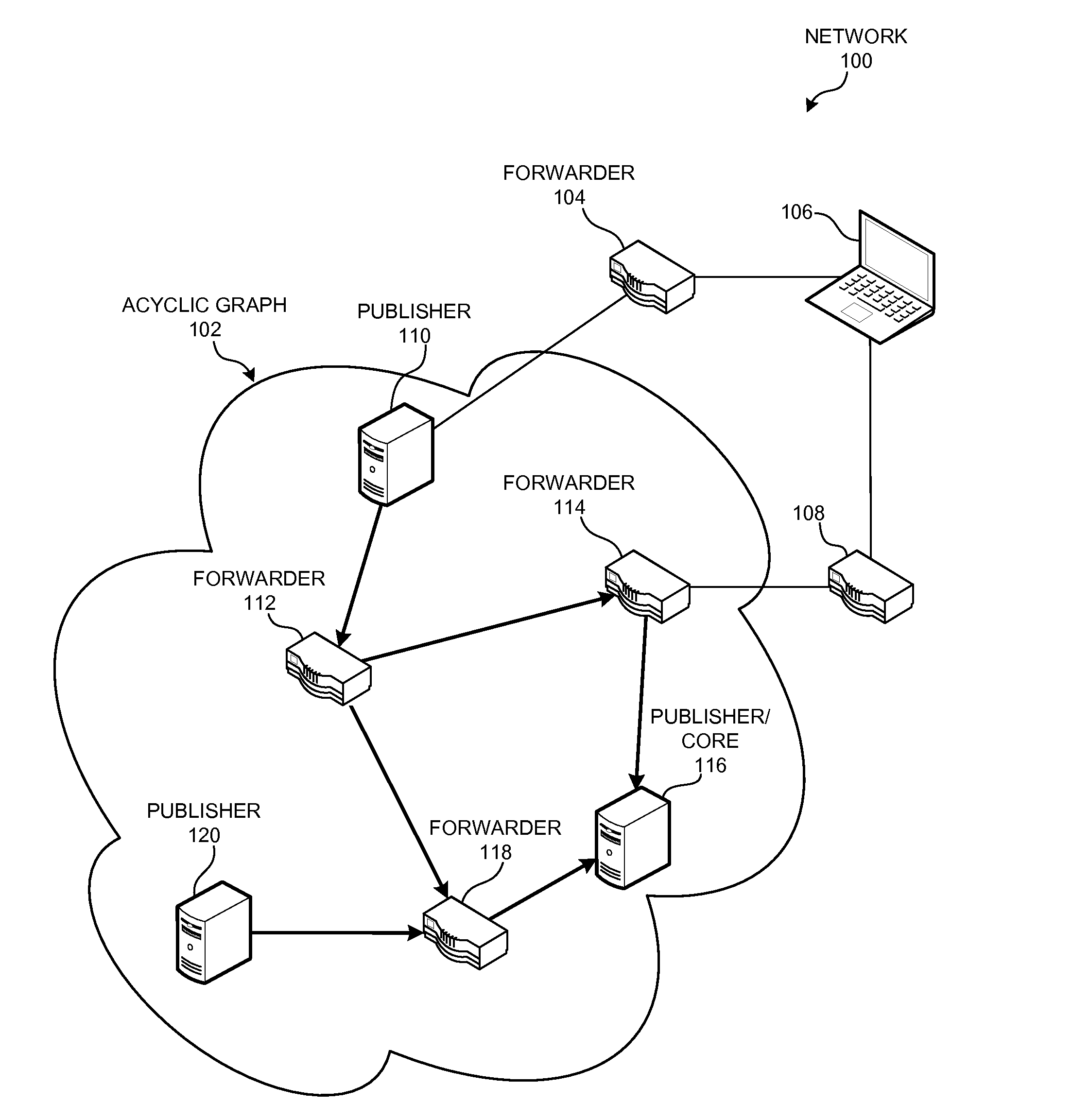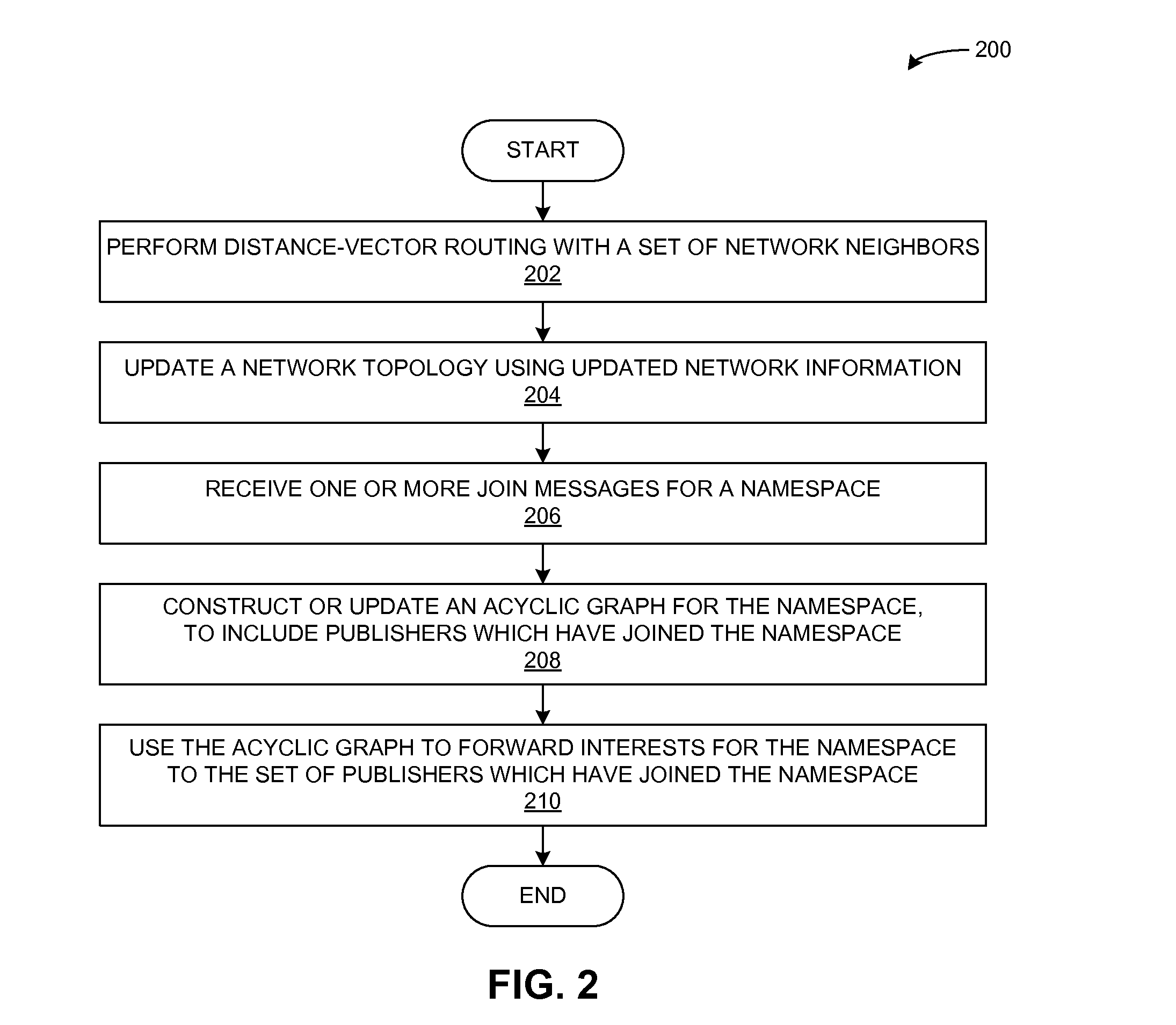Multi-publisher routing protocol for named data networks
a name-based routing and publishing technology, applied in the field of name-based data networking, can solve the problems of not being able to create bindings to namespaces, managing all namespace-to-device bindings across all nodes in a computer network does not scale well, and nlsr suffers from similar scalability issues to custodian-based routing, so as to facilitate forwarding an interest
- Summary
- Abstract
- Description
- Claims
- Application Information
AI Technical Summary
Benefits of technology
Problems solved by technology
Method used
Image
Examples
Embodiment Construction
[0026]The following description is presented to enable any person skilled in the art to make and use the embodiments, and is provided in the context of a particular application and its requirements. Various modifications to the disclosed embodiments will be readily apparent to those skilled in the art, and the general principles defined herein may be applied to other embodiments and applications without departing from the spirit and scope of the present disclosure. Thus, the present invention is not limited to the embodiments shown, but is to be accorded the widest scope consistent with the principles and features disclosed herein.
Overview
[0027]Embodiments of the present invention provide a multi-publisher routing protocol that solves the problem of forwarding an Interest to multiple content publishers over a named data network. For example, in a typical named data network (NDN), network nodes forward an Interest toward one content producer that can return content that satisfies the...
PUM
 Login to View More
Login to View More Abstract
Description
Claims
Application Information
 Login to View More
Login to View More - R&D
- Intellectual Property
- Life Sciences
- Materials
- Tech Scout
- Unparalleled Data Quality
- Higher Quality Content
- 60% Fewer Hallucinations
Browse by: Latest US Patents, China's latest patents, Technical Efficacy Thesaurus, Application Domain, Technology Topic, Popular Technical Reports.
© 2025 PatSnap. All rights reserved.Legal|Privacy policy|Modern Slavery Act Transparency Statement|Sitemap|About US| Contact US: help@patsnap.com



